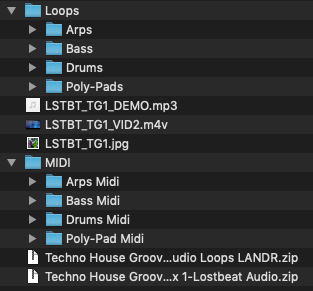Over the years as you build your skills you should also be building your own library presets, audio effect, shortcuts and more. An often overlooked feature is the abelton user library. The Ableton user library can be used to store clips, ideas, presets, sound effects and more.
Uses for the ableton user library:
- Sound design presets – imagine you just spent 30 minutes to crafting a synth sound just to realise it doesn’t actually fit with your song even though it’s a really cool sound. What do you do with it ? You might save it as a project variation, but I found it’s better to save as a preset there can be categorised and loaded up again. I would save this preset under my own presets folder and then categorise it by what type of synth it is.
- Audio / MIDI effects– custom audio effects you regularly use might want to be saved in your user sound library for quick access. Some of examples for me are certain types of compressors, distortion effects or others that I regularly use on projects. For midi effects I might have custom arpeggiators etc saved here.
- Loops – just like discarded sound design ideas sometimes we create loops that might not fit in the project. I find it useful to save these loops in the user library folder under unfinished ideas. Even if it doesn’t fit the current project it might be useful later. Additionally, sometimes a chord progression or bassline can be used multiple times in different songs, or altered with simple variations to create interest. Note I use this to save my own original material, not other pre-recorded loops – abelton’s colour favouriting system could be used for that.
- Templates and structures – templates or structures that you want to use over and over again are also good things to save in the user library. Your default project template should be saved in your user library and updated. Any further updates to it can then be redated so you keep track. Other template files such as an empty effects rack set up for an external drum pad or instrument could also be saved here. Finally, structure outlines are something I also save in my templates folder. This usually contains a track file with clips outlining different structure types-I can talk about this more later in day 12.
- Returns and master – following the idea above about templates I also save separately a copy of my returns and master template. When you start a new project without first having defaulted the returns and master you will have to add them manually but having them saved as individual tracks can make adding them faster. Having a useful and functional returns can really speed up your workflow and free CPU.
- Max patches – with the ever growing number of Max for live patches that can be downloaded for free online it’s worth trying to hold on to the ones that you like to make sure you don’t lose them in case of a reinstall. I like to keep all the Max patches I use in my user library folder so they don’t get lost.
Of course it’s also important to backup your user library (see day 8). Mine is backed up to an external drive which is then also backed up to an online cloud service. The simplest way to do this is to just move your user library into your Google Drive folder, then it will always stay backed up.

